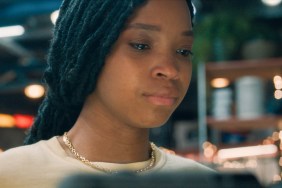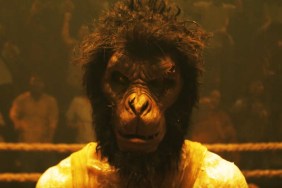My earliest memory of the first Die Hard is watching it with my dad on a rented VHS tape. I must have been pretty young at the time, but my parents never put any movies off-limits as long as one of them was there to watch, too.
I don’t really remember the movie itself from that screening, but I can distinctly recall my father explaining the black bars at the top and bottom of the screen, telling me about aspect ratios and why Die Hard got a special video release to make it look like it did in the theater.
Years later, I went to film school and, lo and behold, “Die Hard” was the very first textbook reference for my freshman cinematography class. The teacher played scenes on mute, showing off the visual mastery that John McTiernan and Jan de Bont worked into just about every shot.
These days, I could do the same thing with the script, breaking it down and explaining, scene by scene, how flawlessly the exposition is delivered. I could chart the rising action and falling action and point out how, 25 years later, the film is still the gold standard for Hollywood action movies.
But that’s not why I love Die Hard.
I mentioned it to Bruce Willis in our video interview earlier this week that Die Hard is a rare film crafted for both the best and worst of times. It’s something that I love sharing with friends and family and something that I turn to cheer me up when theres no one else around.
“I’m looking at Nakatomi Tower right now!” my friend Ian shouted at me over the phone a few years ago.
One of my best friends growing up, Ian had moved from Maryland to Los Angeles a little while after I did to follow his dream of being an actor. He had been in town for a month or two and was doing extra work for an episode of “How I Met I Your Mother” on the Twentieth Century Fox lot. From the top of one of the parking garages, you’ve got a perfect view of Nakatomi Plaza.
In real life, the building is called Fox Plaza. It’s a 35-story skyscraper that stands adjacent to the Century City-based studio. It’s my favorite landmark in Los Angeles and the perfect example of the city’s delicate balance between reality and fiction.

Ian, the biggest Die Hard fan I know, actually dressed as Ellis last Halloween and I knew he’d be thrilled when I invited him to come with me to a press screening of the new film, A Good Day to Die Hard, on the Fox lot. What’s more, the night was set up to celebrate the original film’s 25th anniversary and, just before the screening, Bruce Willis revealed — via explosions — a massive painted mural (which you can watch for yourself by clicking here.
It was after the film, though, that things were supposed to get really cool: Fox was throwing a party inside the actual Nakatomi Plaza.
Walking through the lobby is like being in a dream. The front isn’t entirely a perfect match for the Nakatomi lobby, but by the time you hit the elevators, you’ve actually stepped into Die Hard.
The party was held on an empty upper floor and I was later told that it was sheer happenstance that allowed the space to be between tenants during the 25th Anniversary celebration. Neither Ian nor I was expecting the space to look anything like the Christmas party in the film, but we were both ecstatic to find out that it looked very much like one of the unfinished floors where John McClane hides out.
“We need to take our shoes off,” Ian said, determined, as we got off the elevator.
I weighed the notion of running around a party of fancy studio executives and professional peers barefoot for all of a second before I realized he was right. If you’re ever lucky enough to attend a party at the top of Nakatomi Tower, you better do it right. It wasn’t long before we were in our undershirts, too, and had somehow managed to get a handful of partygoers to follow suit and even more to stand around cheering us on.
That’s one of the best things about Die Hard. Everybody gets it.
Flash back to another night some time ago. I’m standing alone on the roof of that same parking garage next to Fox Plaza. It’s my birthday and I hate my birthday and, every year, make a concentrated effort to spend it alone and get it over with as soon as possible. This particular year it’s even worse because I’m two months out of being on the receiving end of a breakup and have spent most of the day wondering if she’s going to call.
I’d been invited to this screening, though, on the Fox lot where they were to show off a brand new print of the original Die Hard which, up until that night, I had never actually seen on the big screen. As curmudgeonly as I was feeling, that was an offer I couldn’t turn down.
The film ends and it’s after 10pm. I’m heading back to my car and looking up at the building from the movie I’ve just left. Despite the day, it’s making me smile. My phone is still off, though, from being inside the theater and I suddenly get this sick feeling in my stomach with the realization that, when I turn it on, I’m probably not going to find a missed call.
So I’m standing there in the shadow of Nakatomi Tower and clutching the phone in my pocket. It’s silly, I know, but I’m thinking of John McClane walking across broken glass barefoot and I’m thinking about how sometimes you have to do things you know are going to hurt if you’re ever going to get past them. What else can I do? I turn the phone back on.
“I don’t care if it’s good or bad,” Ian tells me as we sit down for A Good Day to Die Hard. “This is already one of my favorite movies.”
I like when stories do that. When they grow to become something that belongs to you and every time you revisit them, they matter more for the weight of the experiences you’ve carried them through. I like that John McClane is, for all intents and purposes, the last man on Earth and that he’s still able to find friendly voices in the night and use their help to save the day.
Sooner or later, you find those kinds of voices in the real world. Sometimes they come from a story that gives you a push to keep on going when you’d rather do anything else and sometimes they comes from a buddy who is able to remind you how important it is to be as enthusiastic as you can about whatever life brings your way.
Every silly bit of it.

Silas Lesnick is a staff writer for ComingSoon.net. You can follow him on Twitter @silaslesnick. Also, check out previous entries of “Imaginary Stories,” An Unexpected Journey Through the Heart of Middle Earth, Tanks for the Memories, Arnold Schwarzenegger, How to Watch Movies and The I in Spider-Man









